As long as there have been countries there have been tensions with the neighbors. Sometimes this leads to war, other times to peaceful negotiation. And sometimes the conflict leads to giant boundary walls. These are the most influential and the most intimidating.
10. Korean Demilitarized Zone
With the 1953 ease-fire that halted the Korean War, both sides agreed to split the peninsula at the front lines. This of course gave us North and South Korea. It was agreed that there would be a roughly two and a half mile buffer zone between the two where there would be no military fortifications. It’s appropriately called the Demilitarized Zone, and it’s currently the most fortified international border in the world. All along each half of the roughly 150 mile line is a constant string of outposts, fortifications and garrisons protecting against any possible act of hostility.
The zone is virtually uninhabited except for two villages — Daesong-Dong on the south side, and Kjong-Dong on the north side. Kjong-Dong is the only village in North Korea visible from the south. However, it’s clearly just a propaganda village, as all the buildings are nothing more than hollow shells that lack windows and interiors.
Also within the zone is the famous village of Panmunjom. There are no permanent residents there, as it serves as a meeting place between the two sides. The border actually runs through the buildings where the two sides meet. It even runs right down the middle of the conference table so the sides can stay on their half.
The DMZ has evolved into a dual purpose barrier. Initially its sole purpose was to protect each side from invasion, but as conditions in North Korea got worse the North beefed-up security on their side to ensure defectors wouldn’t be able to cross. A minor bright spot is that since the zine is virtually uninhabited it’s become a de facto wildlife sanctuary. Many species which were endangered have suddenly been able to thrive without humans around.
9. Melilla and Cueta Border Fences
These two cities are Spanish enclaves along the Moroccan coast. It’s the only land in Africa fully governed by a European nation, although Morocco has never recognized the independence of these two cities and has formally stated that both belong to them. They’ve also long been popular embarkation points for illegal immigrants and smugglers hoping to reach Europe.
Due to these factors, formidable fences were built to protect each city. There are two parallel fences spaced about 20 feet apart, each one 20 feet high and topped with razor wire. The Melilla barrier is approximately seven miles long, and the Cueta approximately five. They’re easily monitored and patrolled, and both are lit up constantly at night. The European Union aided in the funding in the hope that it would deter illegal activity. Both have so far proven to be effective barriers, but they’ve increased tensions with Morocco, especially after 15 people died in a failed attempt to cross in 2005.
8. Maginot Line
Shortly before World War II France justifiably feared invasion from Nazi Germany. Since northeastern France borders Germany, they dedicated a disproportionate amount of military resources to fortifying that border. All along the Maginot Line they built an elaborate series of bunkers, vehicle traps, guard towers and other fortifications strategically placed to make an invasion from the powerful German military very difficult.
Germany solved this problem by simply invading Belgium to the west and then entering France from the north. With so many of their military resources devoted to a now worthless barrier, France fell in just a few weeks. Many remnants of the Maginot line still exist today. After all, none of them were ever damaged in battle!
7. Berlin Wall
The Berlin Wall is perhaps the most famous installment on this list, mainly because it was a literal symbol of the Iron Curtain. Its purpose wasn’t to keep its enemies out, but rather its own people in. Built initially in 1961 as a single makeshift wall, it eventually evolved into the behemoth that’s most familiar to the public.
After World War II the allies divided Germany into four sections. As the capital and largest city, Berlin was also divided. West Berlin became a democratic enclave surrounded completely by communist East Germany. Between 1945 and 1961 there was no physical boundary between the two sections. West Berlin had been rebuilt into a thriving modern metropolis, while East Berlin was drab and still full of ruins from the war. Fed up with this existence and the restrictive nature of the communist government, many East Germans simply walked into West Berlin and established a new life there.
East German officials realized that this would make their country unsustainable, so they hastily built the wall and posted guards with orders to shoot anyone attempting to cross. Since the structure was still fairly simple many attempted the crossing anyway. Most were successful, but some were killed in the process. With each escape upgrades were made until it became two walls separated by roughly 100 feet. Between the two walls was a zone ominously known as the death strip, a barren stretch of sand filled with landmines, vehicle traps and guard towers. Anyone caught there was shot on sight.
The Berlin Wall went right through residential and commercial areas. It literally cut through buildings, down the middle of streets… even a church was left right in the middle of the death strip. Berliners were separated by less than half a football field but were a world apart.
There were some escapes over the years. Most involved creative ways to get over or under the wall, or through the checkpoints — getting through the barricade itself was nearly impossible. In 1989, when East German officials announced that travel restrictions would be reduced, Berliners on both sides of the wall took that statement literally and started destroying it. Within just a few weeks the massive structure was completely gone. There are a few memorial remnants, but Berliners hated it so much they simply couldn’t get rid of it quickly enough.
6. Hadrian’s Wall
By the early 2nd century the Roman Empire had expanded to include most of the island now known as Great Britain. In preparation for a visit from Emperor Hadrian, local officials and military leaders decided they weren’t willing to risk an invasion from northern barbarians, so they constructed a wall approximately 80 miles long from the North Sea to the Irish Sea. Finding suitable materials in the barren landscape was no easy task, so it was primarily constructed from stone and earthen mounds. There were garrisons and outposts strategically placed along the route. It was arguably the most successful barrier on this list, as there were no breaches. However, most historians agree that there was never really a serious threat either. Today it’s Northern England’s most visited tourist destination.
5. Australian Rabbit Fence
Not every barrier is intended to separate people. From an ecological point of view, Australia is very isolated. It’s also a very harsh environment, so native species had to develop resources for defense and competition. Long story short, there are a lot of species in Australia that can kill you.
But the one species that’s been the most destructive isn’t one we would consider dangerous, nor is it native to Australia. In the late 1800s, someone had the brilliant idea of bringing rabbits to the country. Anyone who’s ever had a garden knows that rabbits will eat almost any vegetation. Likewise, anyone who’s ever heard the expression breeding like rabbits knows…. well, you get the idea.
The rabbits quickly spread all over eastern and central Australia and were devouring what little vegetation there was. People on the West Coast knew that it was just a matter of time before they would be there and would consume the small but fertile farmland available to them. Knowing that attempts to exterminate them had proven futile they came up with the next logical step — a fence across the entire continent to keep them where they already were. So a nearly 1200 mile fence was built in the early 1900s. Virtually the entire length of the fence runs through uninhabited areas, and maintenance has proven to be quite a challenge. It’s the most benign barrier on this list, as it’s only about five feet tall and made from steel mesh. To anyone who happens to come upon it would appear to be nothing more than a normal property fence.
Many rabbits have found their way through the fence, but not enough to be considered an infestation. The fertile fields of Western Australia have been producing well for the past 100 years, making this seemingly ridiculous idea one of the most successful on this list.
4. Israel-West Bank Border Fence
Anyone who’s read the news at least once in the past 70 years knows that Palestinians were displaced for the creation of the State of Israel. Most Palestinians are now living in the West Bank and Gaza Strip. This, of course, has resulted in a great deal of tension between the two sides.
No country devotes more of its GDP to preventing terrorism than Israel. Finally fed up with attacks, in the ’90s they proposed walling off the occupied Palestinian territories. Today the wall is mostly complete, and is arguably the most imposing on this list. In urban areas a concrete wall stands as high as 26 feet. In rural areas it’s mainly a 10 foot high chain link fence topped with razor wire. When fully complete it will stretch more than 300 miles and be fully monitored and patrolled.
To say that this has increased tensions is a bit of an understatement. Palestinians have stated that they feel like prisoners, and the decision to build the wall has drawn considerable criticism from the international community. Many have compared it to a new version of the Berlin Wall. In some places graffiti makes a direct comparison, as you can see above.
3. Great Wall of China
It’s actually the Great Walls of China, as there were several versions built in different areas over the course of 2000 years. Most sections are fairly simple and only a few feet high, providing nothing more than a basic barrier to protect China from Tatar tribes to the north. The wall that everyone knows was built in the 14th century during the Ming Dynasty and is an imposing structure ranging from 15 to 30 feet high, with guard towers spaced every few hundred feet. The most famous section runs through the town of Jinshanling, where it’s been completely restored to its original state. This is its closest point to Beijing, making it a popular tourist destination.
As you get just a few miles away from Jinshanling, the wall begins to look like it’s 700 years old. In many places it’s falling apart due to natural decay and being scavenged for materials by locals over the centuries. As you go farther west it’s either unrecognizable or simply gone. While it’s still impressive, in its heyday it was easily the most formidable structure on earth. All told the walls stretch around 4500 miles. And no, it’s not visible from space.
2. USA/Mexico Border Fence
In 2006 the United States Congress passed the “Secure Fence Act,” which approved building a fence along the border with Mexico to curb illegal immigration and drug smuggling. Bear in mind this is a nearly 2000 mile border, most of which is rural desert. It’s not an electrified fence, nor does it have any traps or even alarms. It’s mostly made from material that’s difficult to climb, but if you bring a ladder…
So in order to be fully effective it requires near constant surveillance at all points, a daunting task. Even if there were cameras surveying the entire length, jumpers would likely be long gone before dispatched border control officers could arrive on the scene. A fragile ecosystem with a fence in the middle can also make it difficult for migrating animals, because they don’t really care about international borders.
Finally, as the fence approaches the Gulf of Mexico along the Rio Grande delta, a decades old treaty with Mexico prohibits building in the floodplain. This means that in places the wall is more than a mile from the actual border. This is one of the few urban parts of the border, so the result is a lot of Americans trapped on the wrong side of the fence. Imagine how they feel knowing they have to cross through a checkpoint to get to the store or visit their neighbors! Many feel that the fence is mainly symbolic, and has been described by more than a few as a boondoggle.
1. Inner German Border
This was the barrier that separated East Germany from West Germany. Like the Berlin Wall, its purpose was not to keep its enemies out but its own people in. It was to the Berlin Wall what a semi is to a pickup truck. The people of East and West Berlin were separated by only about 100 feet. The national border wall went mostly through rural areas, and as a result the barrier was over three miles wide. It also stretched the entire length of the border, more than 1000 miles.
Very few got across this barrier, both because of its size and the sheer terror involved. First there was a modest fence which separated the three mile border zone. There were some towns and farms within the border zone, but those who were permitted to live there could only travel to their home, with no other travel within the zone permitted. Of course, why would you want to travel considering that within the zone were guard patrols, tripwires, booby traps, vehicle traps and landmines?
If one were to make it through the border zone they would come to the scariest fence ever built. It was a roughly 12 foot high steel mesh fence booby-trapped with spring guns, which are cone shaped bombs loaded with shrapnel. When the fence was touched it would trigger an explosion and direct the shrapnel at the point of contact. Merely touching the wall would kill you.
If you were somehow fortunate enough to get over that wall there was another death strip similar to the one in Berlin, then another steel mesh fence. All along these fence lines were towers staffed with guards trained to shoot on site. The final fence was about 100 feet from the actual border, meaning that if you were fortunate enough to get past all those fortifications guards could still shoot you before you reached the actual demarcation line. Sadly, a handful of people that close to freedom met that fate.
Like the Berlin Wall, Germans couldn’t get rid of it fast enough. Like the Korean DMZ, it also created a unique natural habitat and even today much of the land is preserved for nature.



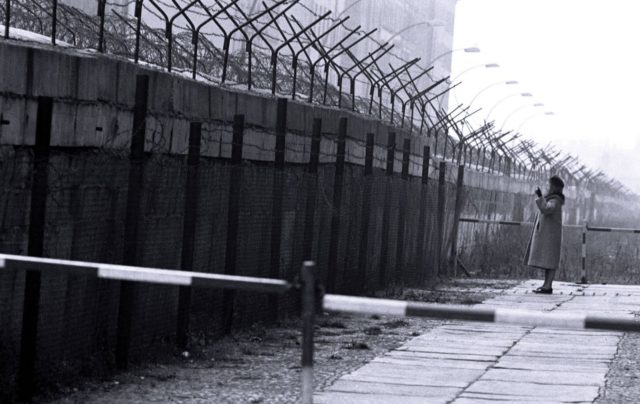
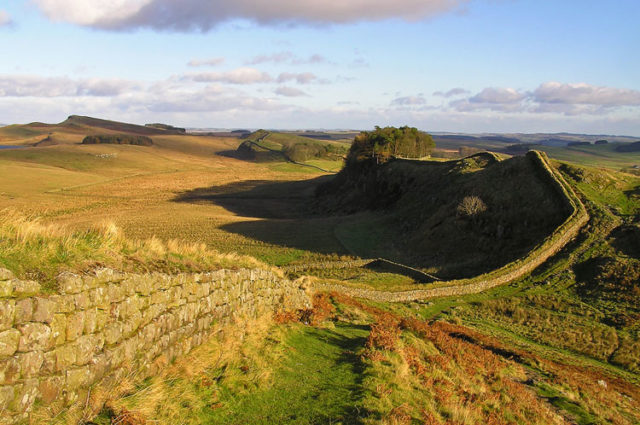


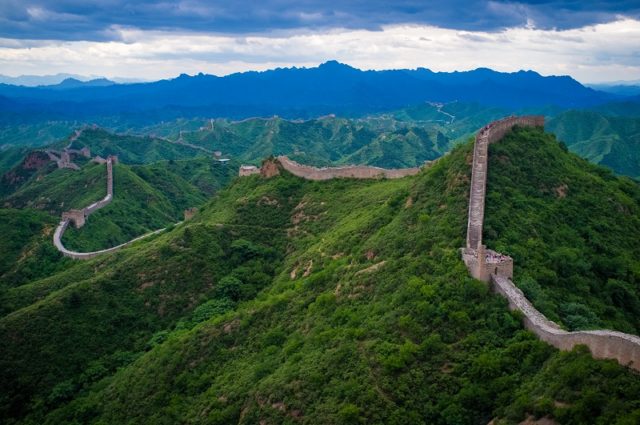
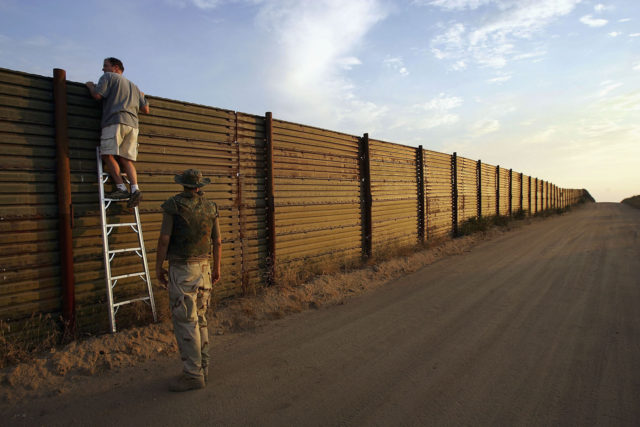
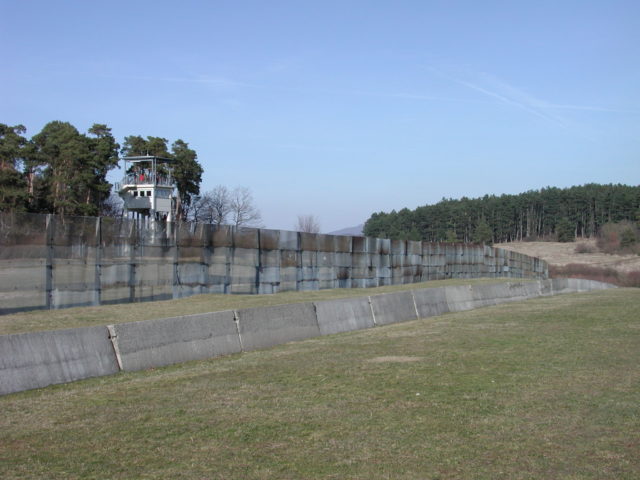
1 Comment
No Walls of Babylon?